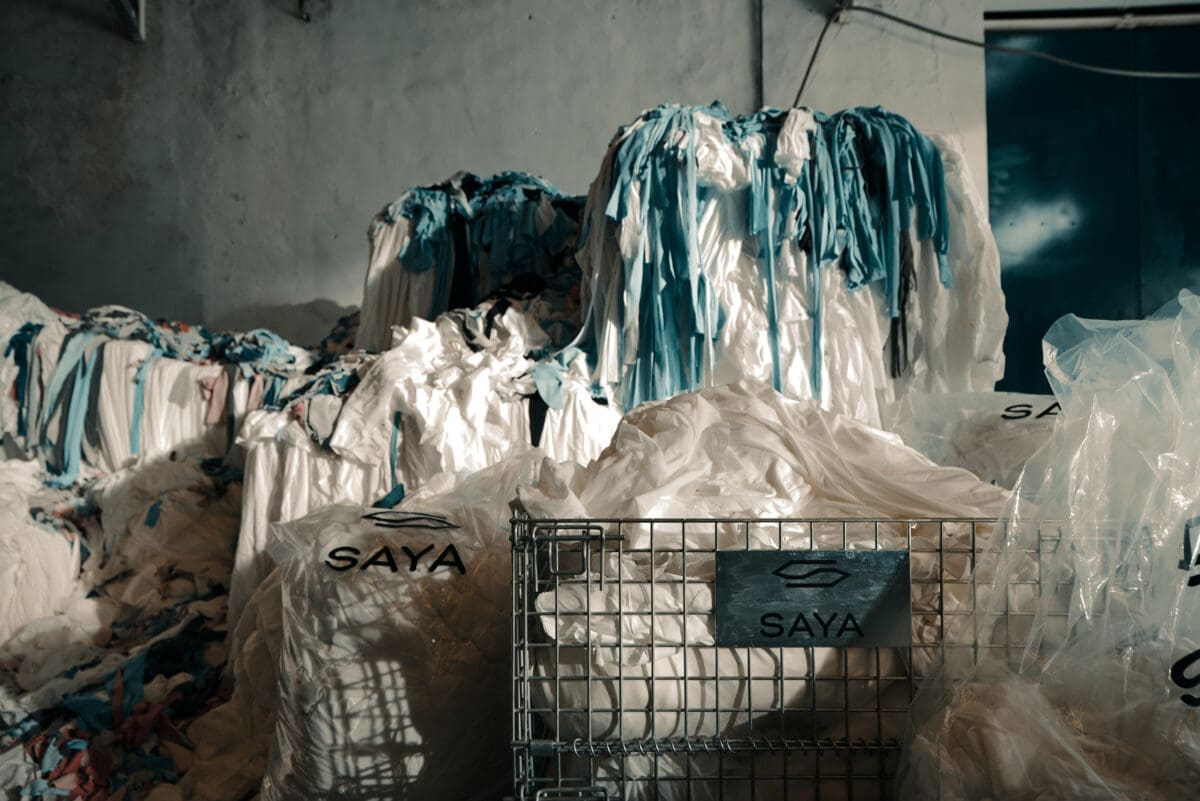There exists a prevalent misperception regarding the recycling of polyester, wherein clothing articles labeled as ‘recycled polyester’ are frequently not derived from other polyester textiles but rather from alternative sources of polyester, such as PET bottles.
Polyethylene terephthalate (PET) is the designated nomenclature for the synthetic polyester polymer. Once the bottles are cleaned and sorted based on their different colors, they are shredded into flakes. These flakes are then subjected to a melting process and extruded, which involves a squeezing mechanism, resulting in the formation of plastic filaments. Subsequently, the filaments are subjected to a spinning circle, forming yarn that can be utilized to fabricate garments. The process above is a mechanical recycling method characterized by its relative simplicity and widespread utilization across several sectors. The recycling of polyester from textile to textile necessitates a more intricate procedure known as chemical recycling.
In essence, it may be stated that there exists a notable distinction between “recycled polyester” and “recyclable polyester.” The comprehensive implementation of textile-to-textile and fibre-to-fibre recycling, which involves converting polyester fabric back into polyester fabric, has yet to be widely adopted within the fashion sector.
Polyester textile-to-textile recycling at scale is widely regarded as a crucial modification required to achieve sustainability in the textile sector. Numerous projects are now underway globally to test and implement this process.
In collaboration with Project Plan B, SATCoL’s Project Re: claim has announced the initiation of plans to establish the inaugural commercial-scale recycling facility for post-consumer polyester in the United Kingdom within the current year. From a commercial standpoint, the company aspires to develop future partnerships with organizations that possess surplus polyester, such as the NHS and the washing industry, which extensively utilize polyester products.
The Full Circle Textile Project is an additional endeavor investigating the scalability of recycling polyester fabrics. The research has successfully developed a chemical recycling technique for polyester, yielding high-quality output comparable to virgin materials, which may be utilized across several textile categories.
In 2016, the Hong Kong Research Institute of Textiles and Apparel (HKIRTA) introduced a project called ‘The Green Machine’ with financial support from H&M. This initiative was established on the opposite side of the globe. This research asserts that it has developed a pioneering technology capable of effectively separating blended textiles on a large scale without compromising their quality. The method employed involves a hydrothermal process, which enables the complete separation and recycling of cotton and polyester mixes into new fibers and cellulose powder, marking a significant advancement in textile recycling.
Given the advancements observed in individual trials worldwide, there is a promising outlook for addressing the recycling of polyester textiles. Given adequate financial resources and strategic collaborations, it is plausible that textile-to-textile recycling could become widely adopted within the mainstream in the foreseeable future. The business sector, namely high-street firms that typically enjoy more significant profit margins, will likely have to adapt to a phase of increased expenses to maintain financial viability.

